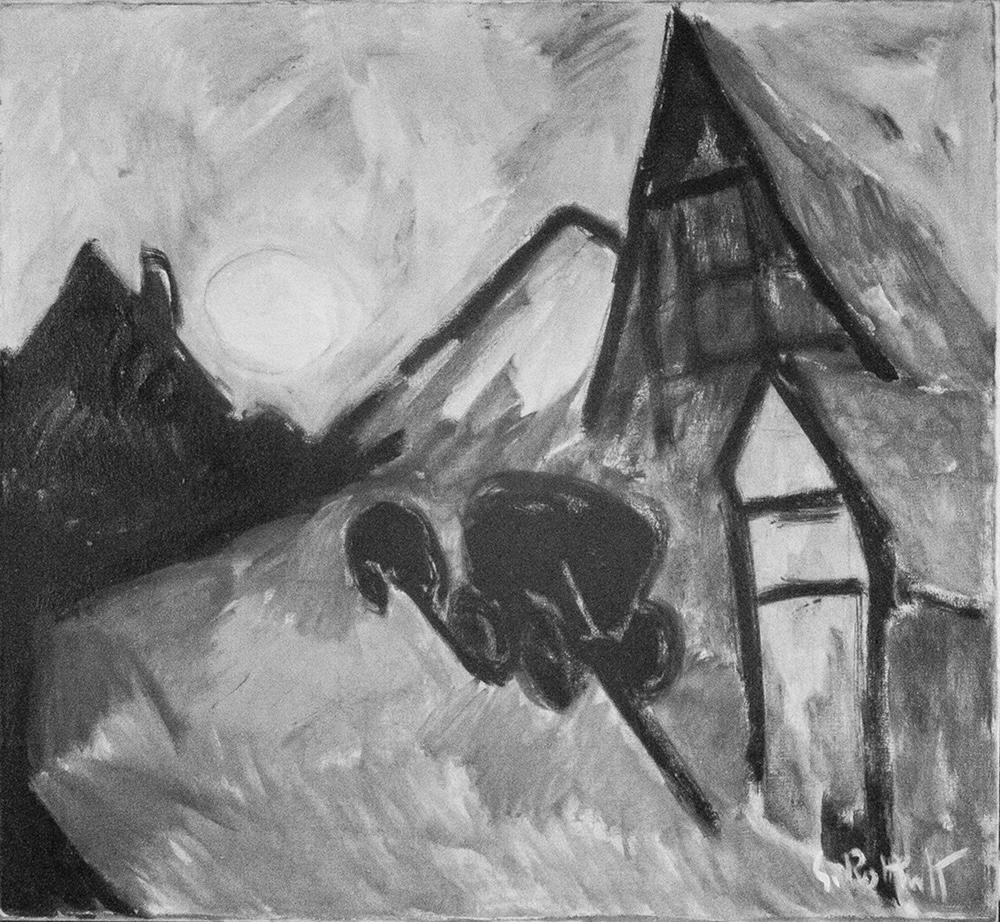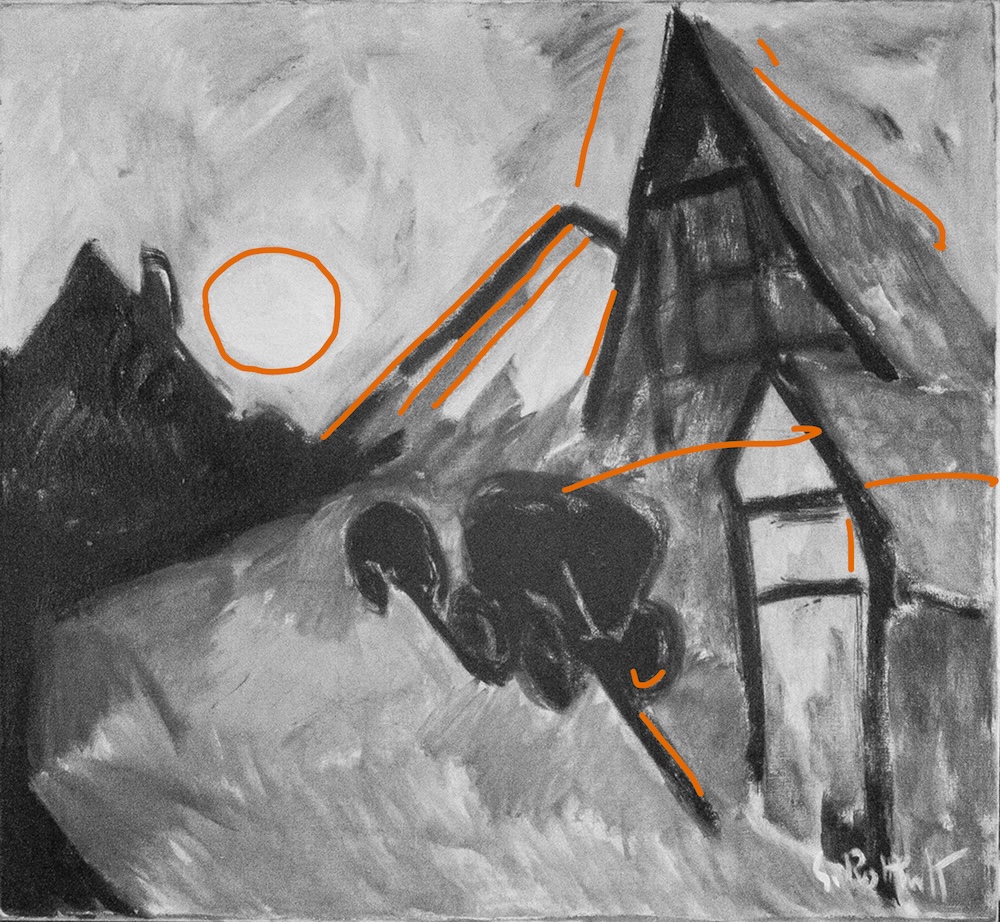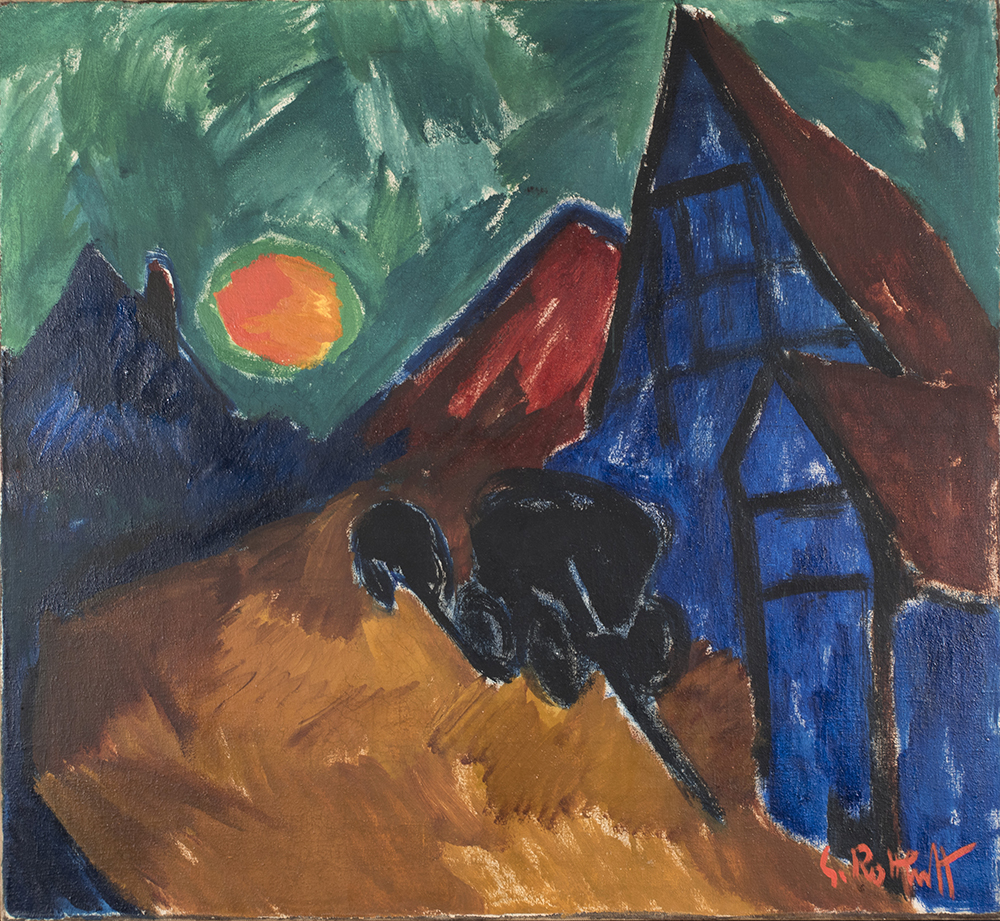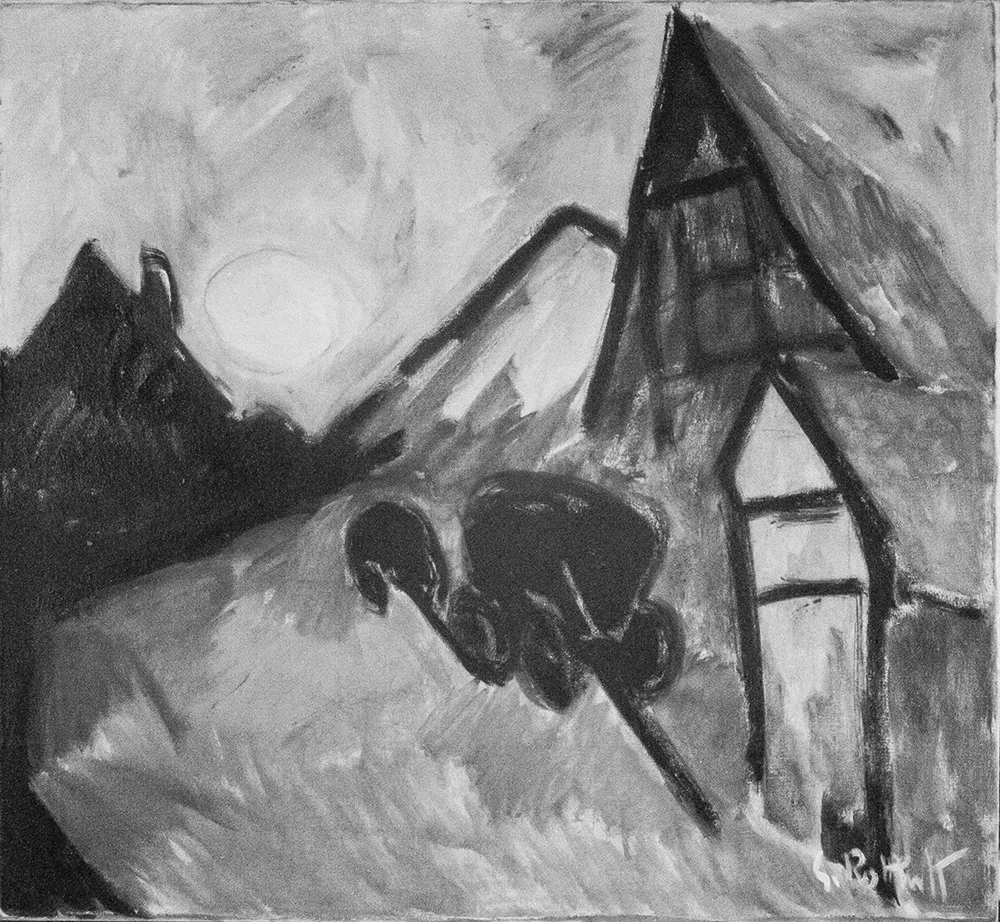Normal light
To create Rising Moon, Karl Schmidt-Rottluff used bold, unmixed colors dispensed straight from the paint tube to the palette. He applied his paint in single layers, taking care to leave the white ground layer visible within the negative areas between forms.
Technical analysis is able to virtually deconstruct the paint layers, revealing how the artist created this powerful scene using a minimal design sketch and color palette.
Karl Schmidt-Rottluff, German, 1884–1976; Rising Moon, 1912; oil on canvas; 34 7/8 x 37 7/8 inches; Saint Louis Art Museum, Bequest of Morton D. May 938:1983
Infrared
Schmidt-Rottluff used a fluid, carbon-rich medium to sketch out his design.
In the infrared image, guiding lines highlight where the artist made minimal markings to map out the moon, mountain, and buildings.
Infrared reflectography can also help identify pigments. The eerie green of the night sky becomes transparent in the infrared image–a phenomenon that occurs in viridian pigment.
Ultraviolet-induced fluorescent (UVF)
Under ultraviolet light, the glow of zinc white shines through breaks in the composition where the artist has left the ground layer visible. For the building on the left, he mixed zinc white with blue to simulate the same sketchy effect achieved in the other farm buildings and sky.

Raking light
Raking light reveals Schmidt-Rottluff’s use of grit in his ground layer and bits of dried paint in his layers.

Specular light
The artist applied to his canvas a thick, white ground that absorbs oil from the paint layers. This creates the matte quality of the paint colors visible in Rising Moon (with the exception of one rebellious glossy blue-black).

Additional Objects
View all objects in the technical imaging suite to reveal hidden details and examine underlying material layers.

-
Glossary
Back (Verso)
The back of a painting provides a wealth of information about its structure. Changes made to the canvas, such as visible repairs, reveal past damage or vulnerabilities. Markings, labels, and inscriptions often tell new stories of the painting’s past, including original titles, previous owners, and exhibition histories.
Raking Light
Raking light, directed from a side angle, casts surface textures into strong relief. This technique highlights details such as thick brushstrokes, canvas weave, or cracks in the paint layers.
Specular Light
Light cast directly onto the painting’s surface at a 90-degree angle highlights glossy or matte qualities. This technique helps determine if a varnish is present and quickly exposes variations of sheen in different paints.
Infrared Reflectography
Infrared reflectography (IRR) uses a specially adapted camera to detect infrared energy. When an image of a painting is captured using infrared light, some pigments appear transparent, which enables the viewer to see through overlying layers of paint. This technique often reveals hidden details, such as preparatory drawings by the artist or parts of the composition the artist painted over.
Ultraviolet Radiation
Ultraviolet (UV) light sources cause certain materials to absorb and re-emit colorful light, known as fluorescence. The fluorescence of some materials can identify certain pigments, such as zinc white, which produces a vibrant glow. Conservators can also detect previous treatments, which may appear dark purple.
X-radiography
X-radiography uses an X-ray source and sensitive film to produce an image of the painting’s composite layers. Materials transparent to X-rays appear dark in the images, while X-ray–absorbing materials like lead white and metal hardware appear white. Artist’s changes and, in some exciting instances, completely different, earlier compositions may be unveiled.



